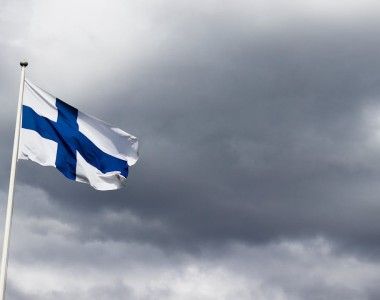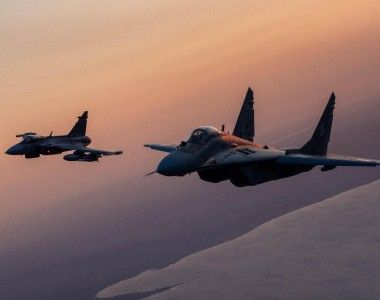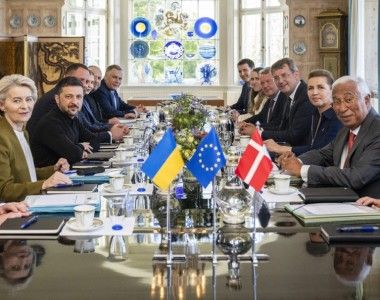K2PL: A Polish-Korean Future Main Battle Tank. Proposal With Support

Hyundai Rotem, responding to the Polish “Wilk” MBT procurement programme requirements, has prepared a broad framework of cooperation, reaching beyond the defence industry sector. The concept of the proposal has been prepared with support of the Korean government. Alongside an in-depth polonization of the MBT and the technology transfer planned to happen in collaboration with the Polish defence industry, it is also assumed that Hyundai Motor Group would substantially reinforce its presence in Poland, including the civilian markets, and that the strategic cooperation at the governmental level would be extended.
Hyundai Rotem presented two of its MBT designs (in a form of models) during this year’s 18th edition of the MSPO Defence Industry Exhibition in Kielce. The designs showcased included the standard South Korean K2 Black Panther and a demonstrator of a polonized version - the K2PL Wilk, tailored to the requirements of the Polish Armed Forces. The model of the latter MBT symbolized the Korean willingness to tailor the MBT to the Polish requirements.
On the top of that, the Korean side - Hyundai Rotem supported by the government - have prepared a much broader offer. The offer includes a technology transfer, polonization of the MBT, and its components and involvement of Hyundai Rotem on the Polish market and cooperation between Warsaw and Seoul. The proposal also includes a work division schedule and guidelines aimed to ensure that technology transfer is effective. The Koreans also point to the fact that the license-manufacturing of the K9 chassis used in Krab howitzer in Poland has been largely successful. They note that the MBT programme would be much broader, bringing the bilateral cooperation to a whole new level.
Design
The K2PL Wilk design is to be based directly on the South Korean K2 Black Panther. The design changes would pertain, on one hand, to the requirements defined by the Polish Ministry of Defence, while on the other they would be determined by polonization (use of domestic components, such as the observation systems, or the C2 suite). The detailed specification sheet for the MBT would depend on the Polish requirements.
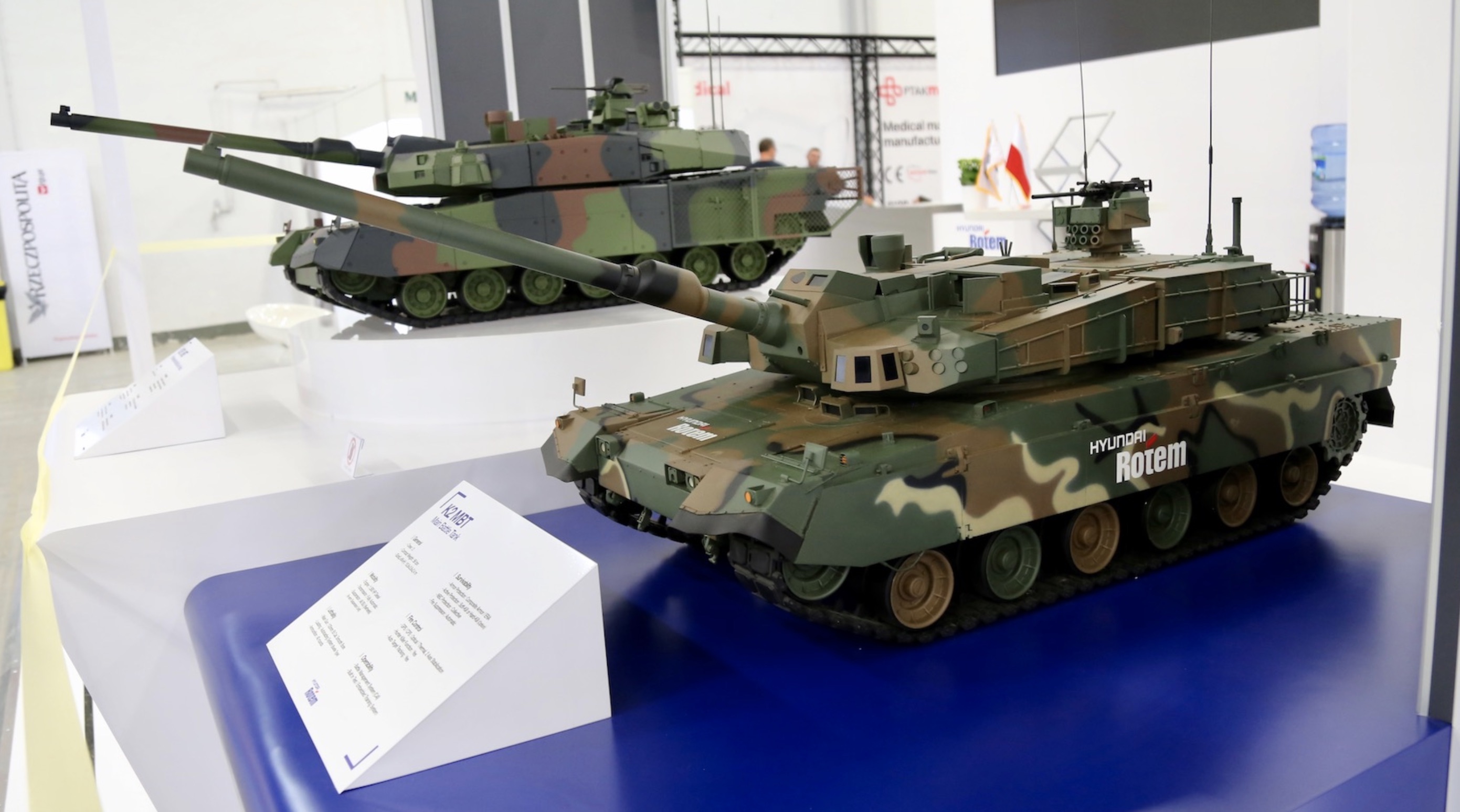
The concept presented by the Koreans suggests that major changes could be made to the MBT's design. It is assumed that the seventh pair of road wheels would be added. This, in turn, should make it possible to significantly reinforce the armour and increase the MBT weight from 55 (current weight of K2 Black Panther) up to more than 60 tonnes. This was reflected in the K2PL model featuring reinforced hull and turret armour, also beyond the front sphere of the vehicle. However, this should not have a significant impact on the mobility of the MBT. The K2PL armour, similarly as the armour of the K2 platform, is to make use of the state of the art composite armour elements and ERA.
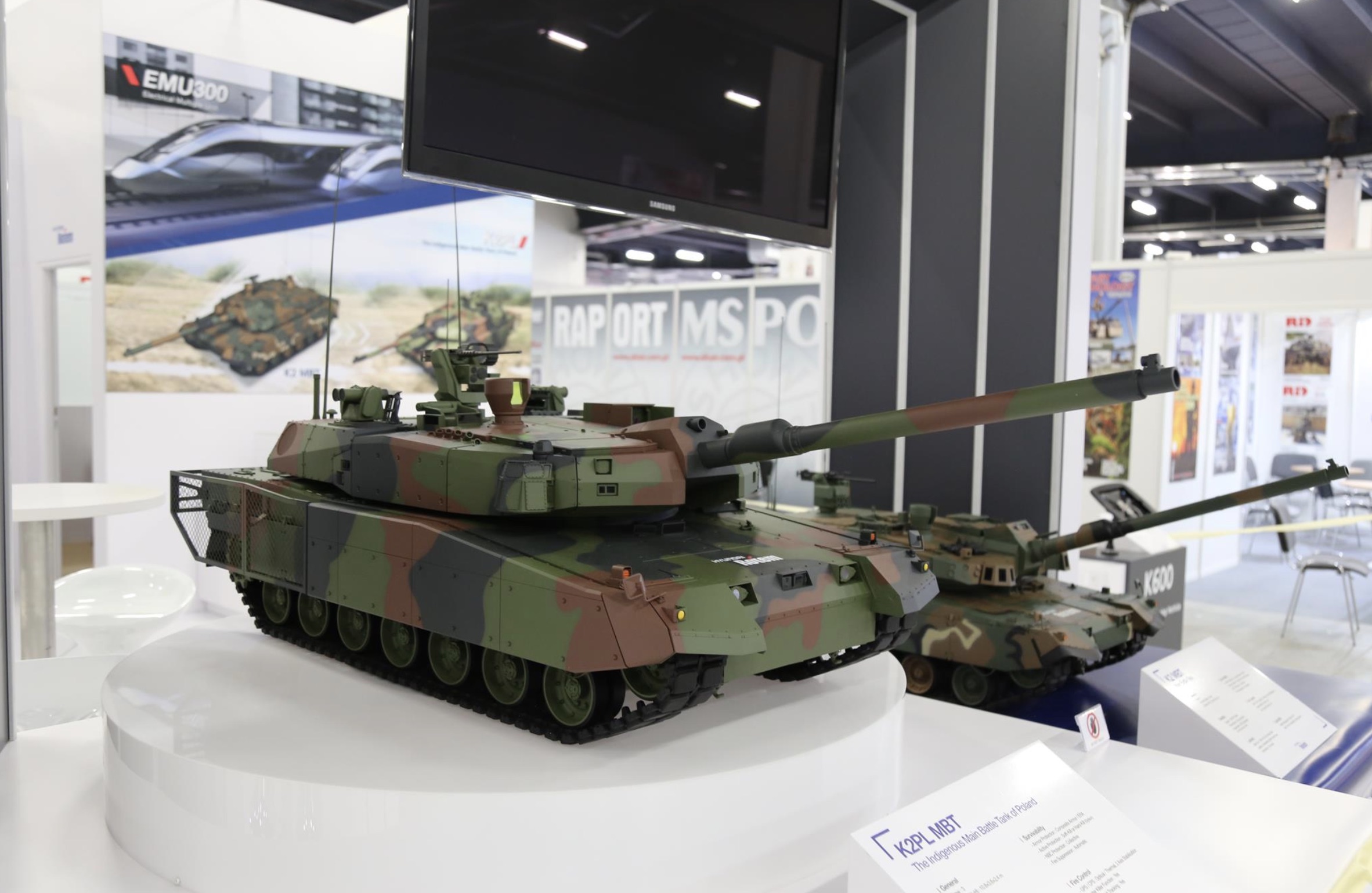
The MBT is to have an advanced fire control system at its disposal, with solutions allowing for automatic target detection and tracking. Naturally, the MBT would offer hunter-killer capability to the crew, with a panoramic commander's sight and full functionality made available to both crewmembers, so the commander would even have a separate laser rangefinder of his own. The armament comes in a form of a Korean 120 mm 55-caliber long barrel gun with an autoloader, coupled with a 7.62 mm machine gun, and a remotely-controlled heavy machine gun station.
The K2PL, similarly as the K2, is being designed for use within a BMS-class network. The exact configuration depends on the requirements that Poland defines. However, the Korean solution enables that the automatic threat assessment and sensor data distribution system could be delivered with the Polish platform. Furthermore, to enhance the vehicle's survivability, it may also be fitted with an active protection system - soft-kill or hard-kill one (optionally). The MBT is to feature a 1500 hp power pack and in-arm type hydropneumatic suspension system. The Koreans also stress that they remain ready to deliver support vehicles using the very same platform, along with a Combat Engineering Vehicle and an Armored Recovery Vehicle - these platforms would be designed in parallel to the MBT.
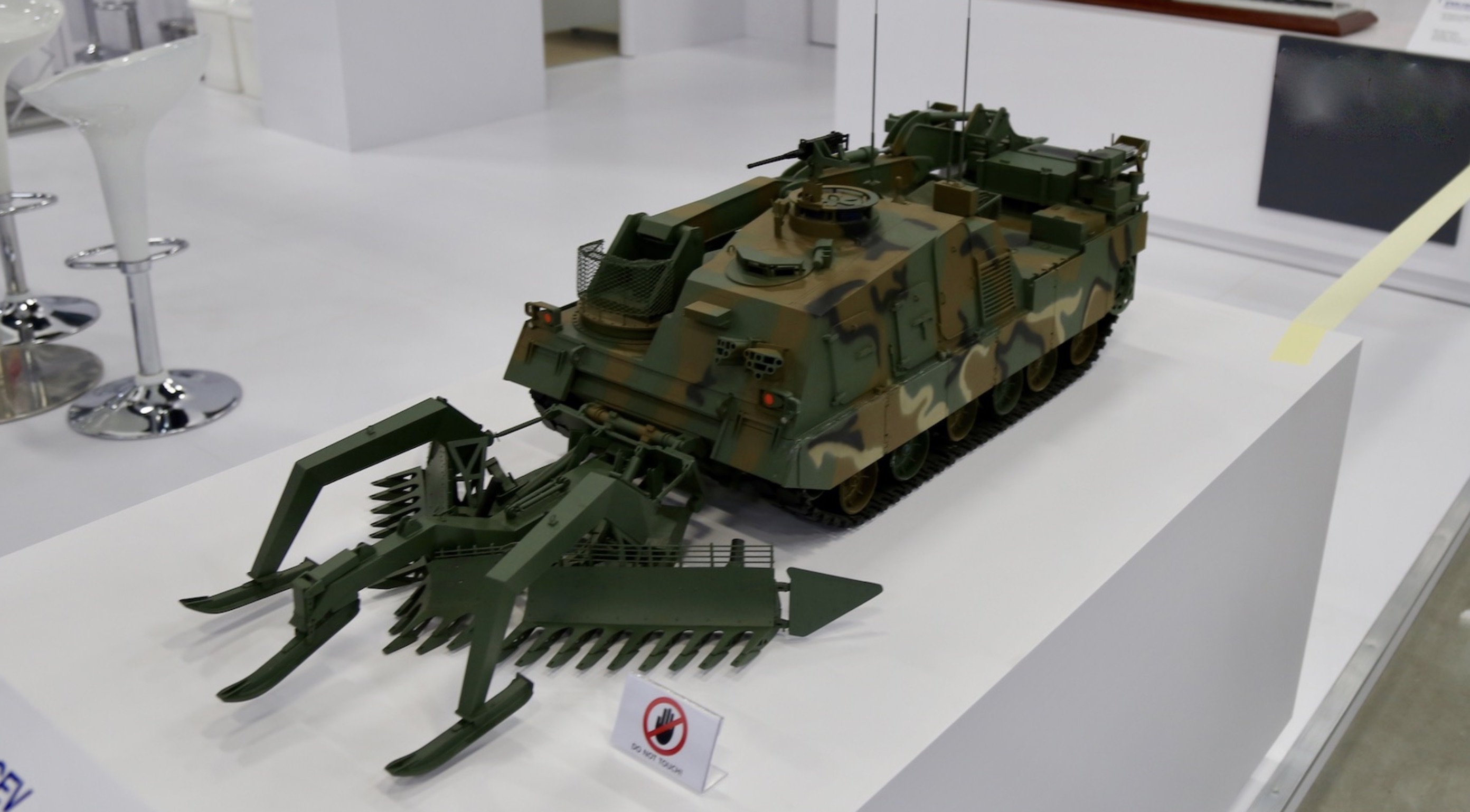
Collaboration Assumptions and Schedule
The Koreans have already prepared a preliminary schedule of the programme, along with its assumptions. It is assumed that the MBT would be polonized (with either Polish components embedded on it or by establishing a potential to produce the Korean components in Poland). The transfer of technology is also expected to happen about the manufacturing of the MBT. Relevant know-how would also be provided for Poland, within the scope of modifying, maintaining of the MBT and integrating new systems.
The Koreans stress that they are aware of the significance of providing Poland with a domestic manufacturing capacity and the ability to maintain and support further operation of the MBT and its components in Poland. Hyundai Rotem wants to meet the Polish requirements by establishing an entirely Polish supply chain, throughout the cooperation program. It is assumed that the scope of the expected technology transfer is to be approved by the Korean government supporting the offer. Then Hyundai Rotem would be transferring the technology, both to the manufacturer/primary contractor, as well as to the Polish businesses dealing with the manufacturing of the MBT components. The Koreans assume that the enterprises responsible for the manufacturing of the MBT would be designated by the Polish Ministry of Defence. A broad engagement of Polish component suppliers is planned as well.
The K2PL programme’s preliminary schedule presented by Hyundai Rotem assumes that the work is going to be divided into three separate stages. The whole programme is divided into three phases: development, initial low rate production, and full rate manufacturing. The first phase, expected to take place between 2022 and 2024, is to make it possible to develop the final form of the polonized K2PL Wilk MBT. Three prototypes would follow. An effort of analogous nature is also expected to take place with regards to the support vehicles: combat engineering vehicle and ARV. This stage is to be carried out based on a separate agreement, with the majority financing to be provided by the Korean government through export credit agencies with officially supported export credits based on intergovernmental discussion, in close collaboration with the Polish defence industry. The Koreans would tailor the steps of the process to any requirements defined by the Polish MoD.
Phase II is expected to take place between 2025 and 2028. It is to allow for the launch of the limited low-rate initial production of the new MBT and support vehicles in South Korea. During that stage, the Polish defence industry companies would be getting ready to receive the transfer of technology and launch the series manufacturing domestically. At this stage, the Polish industrial potential would be established, with the Polish military receiving the first MBTs. This should make it possible for the first MBT elements to attain the initial operational capability. And that, on the other hand, would make it possible to begin the process of withdrawal of the T-72/PT-91 platforms.
Phase III is expected to begin in 2028. It would involve the launch of full-rate series manufacturing of the new MBT and the support vehicles domestically. The program would then be taken over, in its entirety, by the Polish defence industry. The Polish industry is to be able to sovereignly manufacture and maintain the MBT. With the conclusion of the Phase III, it is foreseen that the Korean side would undertake cooperation with Poland to develop a next generation Main Battle Tank, designed not only for Polish and Korean, but also for the export markets, opening new opportunities for the Polish industry.
Cooperation
Should the agreement be signed and should the K2PL programme begin, the Koreans suggest readiness to launch cooperation between the Hyundai Motor Group (TOP 5 companies globally, Hyundai Rotem is a part of Hyundai Motor Group) and the Polish industry. This cooperation is to be established in strategic domains, such as the unmanned technologies (land platforms included).Furthermore, the civil sector would also be involved, in the areas of high-speed trains, autonomous vehicles, and vehicles using alternative fuels (electricity, hydrogen). Finally, the joint effort is also going to cover the area of hydrogen energy.
Financing
The Koreans declare that, when compared to other potential MBT procurement methods that Poland could employ, involving conventional 3rd generation MBTs with a 4-man crew, the Korean solution is better when it comes to its cost-effectiveness, both in procurement, as well as when it comes to the lifecycle cost. The Korean party also assumes that preferential conditions would be adopted for the R&D phase financing, with a majority of the cost being covered by the government through export credit agencies by providing officially supported export credits based on an intergovernmental discussion. Furthermore, it is assumed that the financing for phase II & III, supporting initial production and series manufacturing of the new MBT and support vehicles, would be arranged by Korean government.
The K2 MBT offer assumes that it would be tailored to the Polish conditions. Manufacturing autonomy and joint development of new variants destined for the third markets is also expected. The Koreans stress that their experience in the field of technology transfer programmes is broad and significant. Based on many years of experience and technical knowledge accumulated during development and manufacturing major ground weapon systems including state-of-the-art K2 MBT the Korean industry has already transferred some of its technology to Poland (K9), or Turkey.

The Koreans declare that the offer that the industry has prepared is to bring the Polish defence sector up to speed and prepare it to comprehensively manufacture modern MBTs, their components, and to get deeply involved in other project, in the defence sector and beyond. It is also a major opportunity for the Koreans, as Poland is viewed as a springboard to enter the European marketplace.
Mateusz Zielonka, Jakub Palowski

